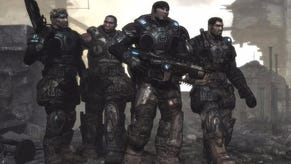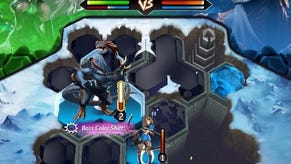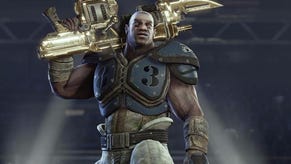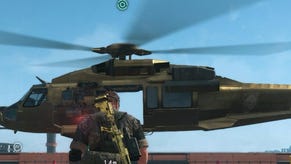Gears of War 2
Going underground.
Let it be known that the Rockworm is our friend. Sure, he's large and unfriendly. And he's a family-sized centipede covered in stone cladding, so he's never going to be prime romance material. And he looks like just another thing to shoot at - and Gears of War 2 already has no problems on that front whatsoever. But for his twenty or so minutes of screen time, he's actually there to serve a more interesting purpose. His slow crawl and bulletproof hide mean he's a perfect piece of movable cover, and his hunger for the glowing fruit that hangs from cavern ceilings means you can steer him around by shooting down chunks of bait. Before you know it, you're using him to glide past enemy gun emplacements for easy headshots. So who cares if he's got sticky mandibles where his face should be? Yay for the Rockworm.
As well as all that, as you're beginning to suspect, he's also a handy tell. Because rather than reinventing an experience that was already ticking over fairly nicely, Gears 2 builds on the first game's framework at every opportunity. The game's opening teaser - an exhilaratingly familiar fifteen minutes in a Locust-infested hospital - could have been sliced out of the original title, but from that point on Epic's designers head for ground less beaten, switching pace, scrambling objectives, and mixing up the scenery. There are new vehicles, including the mutant offspring of an Advance Wars tank and a white-trash monster truck, a handful of weighty additions to the arsenal, and a few fresh enemies. There are even new moves - including a range of charmingly brutal finishers, the option to use downed Locusts as shields, and the frantic chainsaw duels.
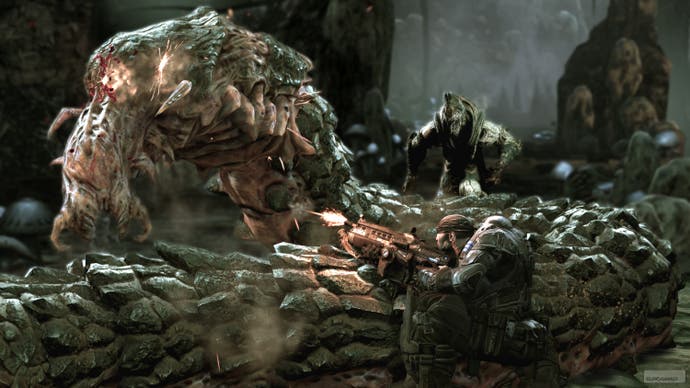
And yet, while all of these elements are entertaining additions, it's ultimately the careful staging rather than the new toys that defines the experience. Our friend the Rockworm may resemble Iron Maiden cover art, but there's an undeniable touch of mirror-world Miyamoto to him; a willingness to explore the slightly outlandish potential of creatures and environment. It reminds you, once again, that beneath the grunting dialogue, the Tabasco-strength attitude, and the David Icke narrative of mankind hassling nasty lizard types, Gears of War has more going on upstairs than it gets credit for.
Primarily, this is a game built for co-op. Marcus and Dom now split up officially and unofficially at more regular intervals, and rather than a chance to explore different-yet-similar corridors, there's a greater sense of co-dependency to these sections, with separate mini-missions that often dovetail cleverly. If you're playing alone the game is entirely linear, but each confrontation has been tweaked to provide for a range of different tactics, allowing you to slowly get the best results from the varied cover, sadistic enemy placement, or the simple promise of experimenting with new weapons like the Mortar, which allows you to strike from afar but requires a fairly good eye for estimating distances, or the Mulcher, a worryingly enjoyable mini-gun that chews through almost anything with vivid efficiency but renders you almost immobile.

Often there are fairly heavy clues as to how to proceed - as ever, the sight of a sniper rifle stacked against some crates means that it's shooting gallery time, and when the ammo starts to pop up all around you during a lull, you can tell there's something big lurking around the next bend - but you rarely have to follow the game's lead too closely. As in Halo, replaying an encounter with different tactics often leads to a surprising outcome. And even if that thing around the next bend isn't necessarily something new, it's probably going to be something clever, like a brutally creative configuration of old foes, or a taxing arrangement of cover. There's always a twist, always a nice slice of spectacle, and while the corridors and trenches may seem familiar, you're going to have to mix up your tactics this time to get by with any style.



